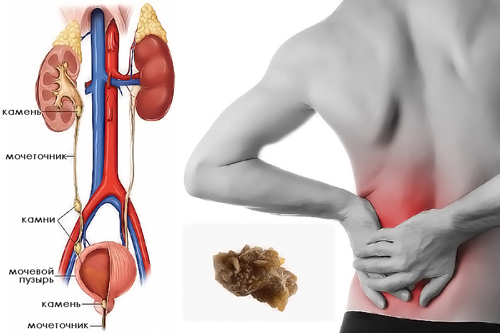
Laparoscopy in urology
19.12.2023
Tumors of the bladder
20.12.2023BLOG OF DOCTOR SERGII LYULKO
Urolithiasis
Contact laser lithotripsy of stones of the bladder, ureters, and kidneys

Urolithiasis, the appearance of calculi in the kidneys, bladder, or ureters, is a relatively common urological disease. Stone disease occurs in people of any age and does not make them felt for a long time: often, stones are detected by chance during ultrasound of the kidneys or bladder.
The most effective methods of treating urolithiasis include minimally invasive lithotripsy procedures (crushing stones). For example, urological surgeon Dr Sergii Liulko regularly helps his patients to get rid of urinary tract stones. Moreover, one of the most technologically advanced, effective, and accurate treatment methods in his arsenal is contacted laser lithotripsy.
If you want to get rid of kidney stones quickly and painlessly, make an appointment with an experienced doctor at the surgical center by phone or any popular messenger.

CONTACT LASER LITHOTRIPSY: THE ESSENCE AND ADVANTAGES OF THE METHOD
Laser crushing of calculi refers to contact methods of treatment of urolithiasis. The minimally invasive operation is performed without incisions or punctures of the skin and access to the stones provide through the urinary tract. First, a special thin endoscope with a camera is inserted into the urethra; then, a laser fiber is fed through it directly to the calculus. The laser sends the energy necessary to break the stone into small fragments, then captures them with a unique tool or natural washing out with urine.
At the same time, the laser beam does not injure the tissues of the urinary system, which contributes to the rapid recovery and easy rehabilitation of the patient.
The main benefits of contact laser lithotripsy include:
- well predictable and quick results with minimal trauma
- absence of pain during the subsequent passage of stones (this is typical for extracorporeal lithotripsy)
- versatility: the ability to destroy stones of any density with a laser
- absence of cuts and punctures, and therefore no scars or scars on the body
- painlessness of the procedure due to adequate pain relief (using general anesthesia or spinal anesthesia)
- Fast recovery: Contact laser lithotripsy is a one-day surgery. The patient returns to daily life almost immediately.
INDICATIONS FOR CONTACT LASER LITHOTRIPSY
This stone crushing method is used to detect large stones and diagnose complex cases of urolithiasis and in the absence of effect/contraindications to remote lithotripsy. It is advisable to consider carrying out contact laser crushing if there is complete overlap or obvious difficulties in urine outflow.
The main indications for this minimally invasive method include:
- the size of stones is from 5 mm and more
- high density of calculi
- the presence of stones that are in one place for a long time
- stones in the ureter
- lack of effect from shock-wave crushing.
HOW IS LASER LITHOTRIPSY PERFORMED?
The surgeon-urologist Dr. Sergii Liulko takes from 30 minutes to 2 hours to operate. It all depends on the number and location of stones. Then, with the help of an endoscope, all urinary system organs are examined, including the ureter and bladder.
After crushing the stone, a stent is placed in the ureter, removed after 2-3 weeks on an outpatient basis.
After completing the procedure, the patient remains under the supervision of doctors for some time. Then, as a rule, doctor prescribes antibiotics to exclude inflammation in the urethra or kidneys.






